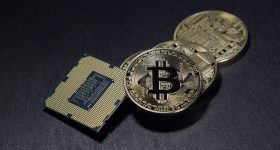Content
In December of 2019, retail accounted for 13% of all equity trades; a year later, that number had almost doubled to https://www.xcritical.com/ 22.8%. And the sway of the masses was the principal force in lifting the total volume of buying and selling by 55% over those 12 months. For starters, different types of investors will often trade in opposite directions. A prime example would be the GameStop saga of 2021, when retail traders purchased shares of the video-game company en masse by coordinating through Reddit and Twitter.
ELI5 What is a payment for order flow (PFOF)?
While PFOF can pose conflicts of interest, retail trading models in countries like Germany – pfof meaning which we highlighted in a January 2022 paper – are far more concerning. Have you ever seen a stock exhibiting normal trading behavior and then all of a sudden the stock price drastically drops out of nowhere? This type of price action could be related to the announcement of a shelf offering or the execution of an “at-the-market” sale from…
Ban on Payment for Order Flow Threatens Revenue: Four Tips for Online Brokers
There is much controversy about the ramifications of order flow arrangements. Access real-time intent data to measure your success and maximise engagement. 15 Market depth refers to a market’s ability to absorb relatively large market orders without significantly affecting the price of the security. 6 Oxera was commissioned by Deutsche Börse, Euronext and Nasdaq to conduct this review. Yarilet Perez is an experienced multimedia journalist and fact-checker with a Master of Science in Journalism.
Consolidated tape with post- and pre-trade data?
The amount of the taker fee is usually greater than the amount of the maker fee. While PFOF typically accounts for only three to five percent of brokers’ total revenues, the ban is the clear first step of a regulatory strategy that has long been feared in the industry, which aims to prevent hidden remuneration in securities trading. The next logical phase will likely be a ban on reimbursements, such as for certificates or leverage products, from product issuers, which would destroy between 15 and 20 percent of renowned online brokers’ revenues. Instead of routing customer orders to an exchange, a broker may use a market maker. As the name implies, a market maker will make a market for certain financial instruments.
Payment for Order Flow (PFOF): Definition and How It Works
The broker collects a small fee or rebate – the “payment” for sending the “order flow” or PFOF. The larger stock market is made up of multiple sectors you may want to invest in. Securities and Exchange Commission (SEC) requires broker-dealers to disclose their PFOF practice in an attempt to ensure investor confidence.
- Rather than banning PFOF, Tabb pointed to “less obtrusive ways” to fix the equity market structure without hurting retail investors.
- Float rotation describes the number of times that a stock’s floating shares turn over in a single trading day.
- Investors who trade infrequently or in very small quantities might not feel the direct effects of their brokers’ PFOF practices, although it might have wider effects on the supply and demand in the stock market as a whole.
- Taker fees are minimized by placing limit orders at a trigger price that builds out an order book.
- PFOF is used by many zero-commission trading platforms on Wall Street, as its a financially viable option and allows them to be able to continue offering trades with no commissions.
Level 1 vs. Level 2 Market Data
(In other words, market makers become the seller to your buy order or buyer to your sell order). The trading profits that wholesalers generate, get split three ways, said Tabb. A portion is captured by the wholesaler, then it gets split into PFOF for the broker, and then the broker decides how much is shared with the investor as price improvement. “Robinhood has dialed that PFOF process much more toward the broker than the client,” he said, noting that there is variability among brokers in how they divide up the payments. The SEC rule 606 requires all brokers disclose the presence of order flow agreements to customers and update their data through filing disclosures that specify who they received order flow payments from and how much. Many brokers will “spin” the cost savings and “price improvements” they pass down to their customers as a result of order flow agreements.
but Do investors really benefit?
Ratings are not recommendations to purchase, hold, or sell securities, and they do not address the market value of securities or their suitability for investment purposes. One of the stock market myths is that commission free trades are actually free. PFOF is a common practice among options trading and is becoming more common with stock exchange trades. Its a concept that retail investors often arent aware of but many commission-free stock brokers use PFOF. Public, however, has chosen not to accept PFOF, giving its community the option to tip instead. A common contention about PFOF is that a brokerage might be routing orders to a particular market maker for its own benefit, not the investor’s.
It is in question whether investment firms can also receive payments in connection with transactions of clients domiciled in another Member State that has also made use of the grandfathering rule. Commission-free trading refers to $0 commissions charged on trades of US listed registered securities placed during the US Markets Regular Trading Hours in self-directed brokerage accounts offered by Public Investing. Keep in mind that other fees such as regulatory fees, Premium subscription fees, commissions on trades during extended trading hours, wire transfer fees, and paper statement fees may apply to your brokerage account. Banking services and bank accounts are offered by Jiko Bank, a division of Mid-Central National Bank.JSI and Jiko Bank are not affiliated with Public Holdings, Inc. (“Public”) or any of its subsidiaries. You should consult your legal, tax, or financial advisors before making any financial decisions. This material is not intended as a recommendation, offer, or solicitation to purchase or sell securities, open a brokerage account, or engage in any investment strategy.
A Banker’s Safari: Navigating The Zoo of Factors with Berkin and Swedroe’s Guide to Factor-Based Investing
Another avenue is to improve the “time granularity” on the 605 report time buckets, with the most timely currently at 1-9 seconds, given that orders are executed in milliseconds. “Shortening these time buckets would lead to better transparency and put greater price improvement pressure on wholesalers,” he said. Defenders of PFOF say that mom-and-pop investors benefit from the practice through enhanced liquidity, the ability to get trades done. They also point to data that shows customers enjoy better prices than they would have on public stock exchanges. But perhaps the biggest gain for retail investors is the commission-free trading that is now a mainstay in today’s equity markets.
All orders for sale are non-solicited by Upstream and a user’s decision to trade securities must be based on their own investment judgment. Payment for order flow is more prevalent in options trading because of the many different types of contracts. Options give purchasers the right, but not the obligation, to buy or sell an underlying asset. Every stock option has a strike price, the price at which the investor can exercise the contract, and an expiration date — the day on which the contract expires. Founded in 1993, The Motley Fool is a financial services company dedicated to making the world smarter, happier, and richer.
These and other market makers use high-frequency algorithms that scan exchanges to compete fiercely for orders. Because retail order flow is seen as the bread and butter of the market maker’s operation, it’s in the market maker’s best interest to attract that order flow. Hence the compensation or “payment” they may offer to brokers for that order flow. Regulations require that brokers fill orders at what’s called the NBBO (National Best Bid and Offer) or better.
According to Rule 605 disclosures by wholesale broker-dealers, retail investors collectively received $3.7 billion in price improvement in 2020. In our view, the result is a market that behaves less like a multilateral exchange and more like a systematic internaliser (primarily used by banks to transact proprietary liquidity against client orders). These single market-maker venues also use a slimmed-down settlement process, which strips out a chunk of post-trade costs.
When a brokerage receives a stock market order, they manage the deal through a clearing firm, which routes orders. The clearing firm is responsible for making sure everything goes smoothly between the brokerage, market maker, and exchange. A market maker is an individual or financial firm committed to making sure there are securities to trade in the market. Market makers are essential to maintaining an efficient market in which investors’ orders can be filled (otherwise known as liquidity).




